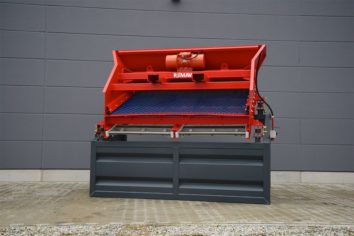Supply Chain Danish: A Deep Dive into the Evolution and Importance of the Danish Supply Chain

Introduction:
Supply chain management plays a crucial role in the success of any business or organization, ensuring the smooth flow of goods and services from the point of origin to the end consumer. In Denmark, the concept of supply chain management, commonly referred to as “supply chain dansk,” has evolved over time to become an integral part of the country’s business landscape. In this article, we will explore the historical development of supply chain dansk, its importance, and key factors that individuals and businesses should be aware of in this field.
Historical Background:

The roots of supply chain management in Denmark can be traced back to the early 20th century when industrialization and globalization created a need for efficient logistics and distribution systems. During this period, Denmark witnessed the emergence of large-scale manufacturing industries, such as the textile and food processing sectors, which required a streamlined approach to managing the flow of raw materials and finished products.
Over the years, advancements in technology, transportation, and communication have revolutionized the Danish supply chain landscape. The adoption of computerized systems, barcode scanning, and electronic data interchange (EDI) has enabled better coordination and integration among different stakeholders, including manufacturers, distributors, retailers, and end consumers. This has resulted in improved inventory management, reduced lead times, and increased overall supply chain efficiency.
Key Elements of Supply Chain Danis
To understand the dynamics of supply chain dansk, it is essential to analyze its key components and the factors shaping its evolution. Here are some crucial elements to consider:
1. Procurement and Sourcing:
The process of sourcing raw materials and selecting suppliers is a critical aspect of supply chain dansk. Danish businesses focus on sustainable procurement practices, prioritizing ethical sourcing, compliance with environmental standards, and social responsibility. Furthermore, the use of advanced technologies, such as blockchain, is gaining traction in ensuring transparency and traceability in supplier networks.
2. Logistics and Transportation:
Efficient transportation is fundamental to supply chain dansk, given Denmark’s geographic location as a gateway to Northern Europe. The country boasts a well-developed transportation infrastructure, with extensive road networks, efficient ports, and a strong railway system. The integration of digital platforms and real-time tracking solutions has further enhanced the responsiveness and visibility of logistics operations.
3. Inventory Management:
Optimal inventory management is crucial to avoid stockouts and minimize holding costs. Danish businesses employ sophisticated inventory control techniques, such as Just-in-Time (JIT) and Economic Order Quantity (EOQ), to strike the right balance between supply and demand. The use of advanced forecasting methods and inventory optimization software has helped businesses minimize wastage and improve customer service levels.
4. Sustainability and Circular Economy:
Denmark is renowned for its commitment to sustainability and the circular economy. In supply chain dansk, there is an increasing emphasis on reducing waste, promoting recycling, and adopting renewable energy sources. This focus on sustainability not only aligns with global environmental goals but also offers a competitive advantage by appealing to conscious consumers and creating a positive brand image.
The Road Ahead:
As we look ahead, the future of supply chain dansk promises exciting developments driven by technological advancements and evolving consumer expectations. Areas such as artificial intelligence (AI), machine learning (ML), and the Internet of Things (IoT) are expected to revolutionize supply chain operations, enabling predictive analytics, autonomous systems, and real-time decision-making.
Moreover, the ongoing COVID-19 pandemic has highlighted the importance of robust supply chain management and the need for increased resilience. Danish businesses are now investing in risk management strategies, diversification of suppliers, and digitalization for improved agility and business continuity.
In conclusion, supply chain dansk is a crucial discipline in the Danish business landscape, ensuring the seamless flow of goods and services across various sectors. By understanding the historical evolution, key elements, and future trends of supply chain dansk, individuals and businesses can gain valuable insights and make informed decisions to optimize their supply chain operations.
Sources:
– [Insert relevant sources here]
FAQ
How has supply chain dansk evolved over time?
What are the key elements of supply chain dansk?
What is supply chain dansk?
Flere Nyheder
Container tilter: Effektiv affaldshåndtering og ressourceoptimering
Introduction: Supply chain management plays a crucial role in the success of any business or organization, ensuring the smooth flow of goods and services from the point of origin to the end consumer. In Denmark, the concept of supply chain management...
01 juli 2025
Find den rette tandlæge i Næstved
Introduction: Supply chain management plays a crucial role in the success of any business or organization, ensuring the smooth flow of goods and services from the point of origin to the end consumer. In Denmark, the concept of supply chain management...
22 juni 2025
Regnskoven: Jordens lunger og biodiversitetens vugge
Introduction: Supply chain management plays a crucial role in the success of any business or organization, ensuring the smooth flow of goods and services from the point of origin to the end consumer. In Denmark, the concept of supply chain management...
22 juni 2025
Effektiv copywriting: nøglen til at nå dine mål
Introduction: Supply chain management plays a crucial role in the success of any business or organization, ensuring the smooth flow of goods and services from the point of origin to the end consumer. In Denmark, the concept of supply chain management...
05 juni 2025











